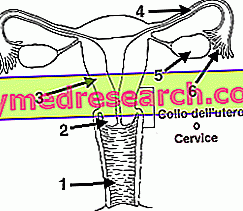Bulimia is a disorder of eating behavior marked by abnormal dietary habits, which result in the occasional and compulsive ingestion of large quantities of "forbidden" food, followed by a profound sense of guilt that justifies the use of "neutralization" "of what is ingested, such as self-induced vomiting, the abuse of laxatives and diuretics, the return to a particularly restrictive diet and strenuous exercise.
The diagnosis of bulimia is generally more difficult than that of anorexia nervosa, as the symptoms are more easily camouflaged and the body weight does not go down to the levels of pathological thinness that characterize chronic food deprivation. Very useful, in this sense, the diagnostic criteria for bulimia listed in DSM-IV, which we report below:
- Recurrent episodes of unbridled feeding, with rapid consumption of large quantities of food in short periods of time: at least two episodes a week for three months
- Excessive interest in body shape and weight
- At least three of the five situations reported:
- consumption of highly caloric foods, often difficult to digest, during a binge;
- consumption of other foods relatively low, during a bulimia crisis;
- at the end of the bulimic crisis, abdominal pain, induced vomiting, sleep and interruption of social relations;
- repeated attempts to lose weight with restrictive diets, purgatives, diuretics and provoked vomiting;
- frequent weight fluctuations of over 4.5 kg, both upwards and downwards
- Awareness of having abnormal eating behavior, fear of being unable to stop the introduction of food with the will; absolute lack of control during the bulimic crisis
- Depression and self-pity after the crisis
- Exclusion of anorexia nervosa and known physical causes of bulimia episodes
The medical symptoms and disorders that accompany bulimia derive essentially from the use of elimination methods, which lead to electrolyte imbalance. Hypokalemic and hypocloremic alkalosis is often observed in patients with at least daily vomiting, while a picture of metabolic acidosis is more frequent in patients who abuse laxatives. Thus, the patient with bulimia at an advanced stage may complain of symptoms such as:
- thirst
- water retention
- dehydration
- edema (swelling of arms and legs)
- hypertrophy of the salivary glands, which gives the face a plump appearance aggravating the bulimic's concern for its appearance
- sores, scars or calluses on the knuckles or teeth marks on the hands
- dizziness
- spasms and tics
- weakness and apathy
- arrhythmias
- dental erosions, caries
- sore throat and hoarseness
- menstrual irregularities
- disorders of the alvo
- anxiety, depressive symptoms
See also: Bulimia symptoms



